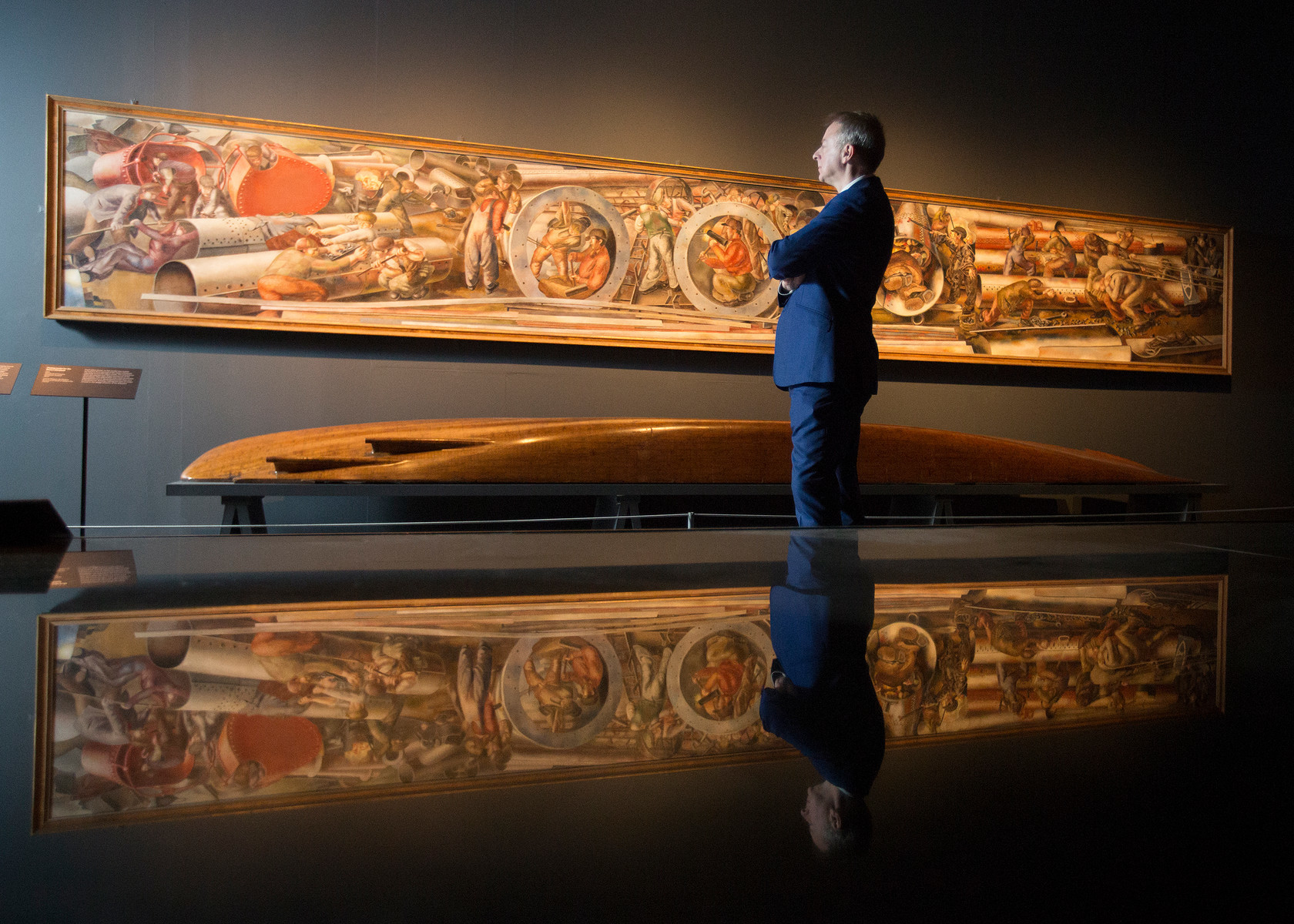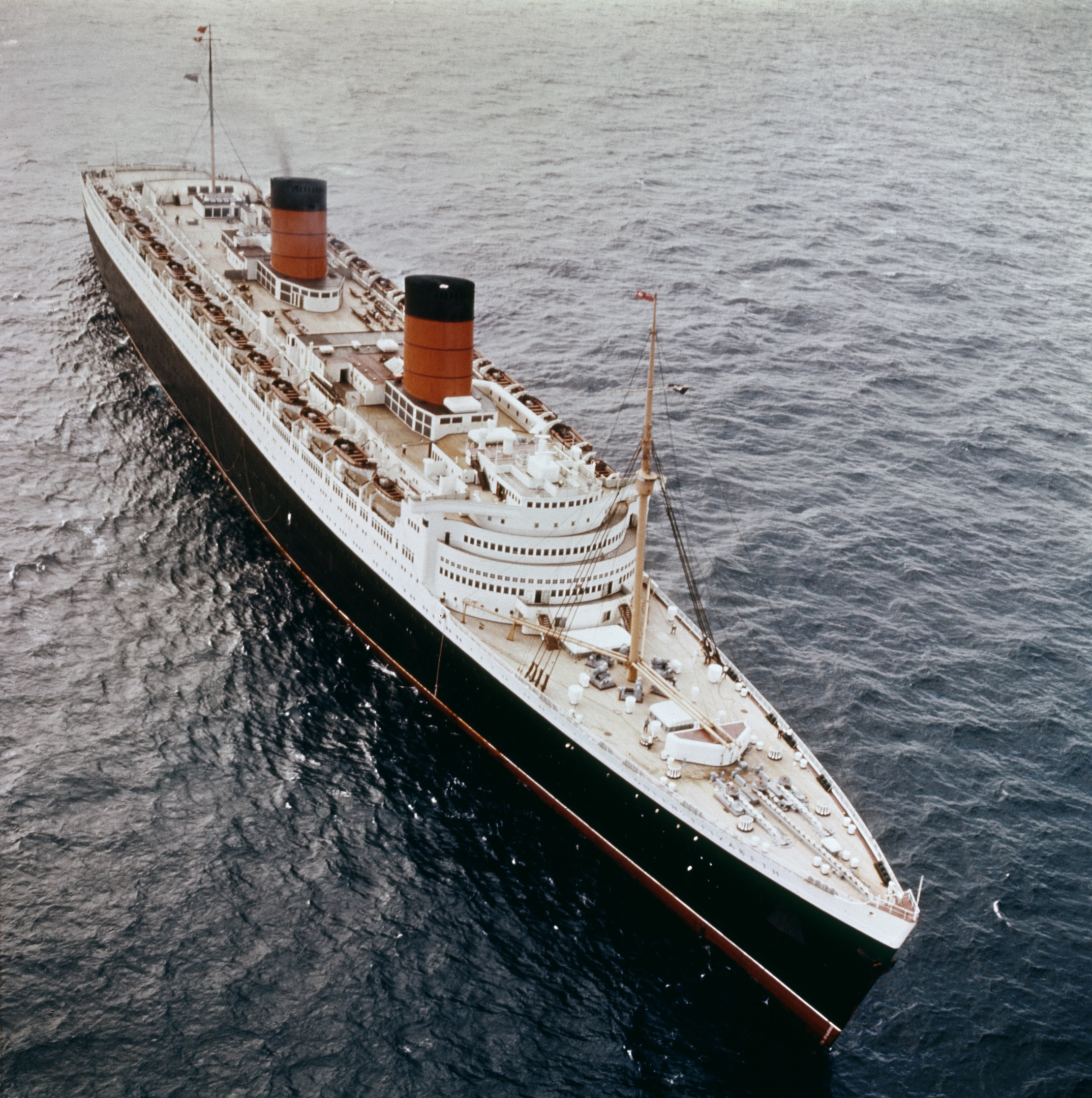THEY were the giants that crossed the world’s oceans and changed the course of history.
From the mass immigration of millions seeking a better life to the laid-back luxuries of travel from a bygone era.
Now the story of the golden age of sea travel is being told in a major new exhibition called Ocean Liners: Speed & Style.
It opens at the V&A in London this weekend and will be the launch exhibition when the £80m design museum opens in Dundee in September.
Coming north of the border is fitting because so many of the grand old ladies of the sea were built on the River Clyde.
“About half of the great liners came from Scottish shipyards so this is really celebrating their place in history,” said V&A project curator Anna Ferrari.
Scotland plays a massive part in the exhibition with the stories of three Queens – Queen Mary, Queen Elizabeth and QE2 – among the crowning glories.
As well as the engineering impact, many Scottish companies were involved in the fitting out of liners.
Among them was Templeton’s, the carpet maker whose architecturally stunning factory modelled on the Doge’s Palace in Venice still stands proudly overlooking Glasgow Green.
Their carpets graced liners including Titanic, but it’s flooring from the Queen Mary that’s on show.
“We have a couple of large pieces from different areas to give a sense of decoration on board,” said Anna. “But what went on the walls was just as important. It was nicknamed The Ship Of Beautiful Woods because there was so much marquetry from woods brought from throughout the British Empire.”
One of the star exhibits is a five-metre-long model of the RMS Queen Elizabeth, from the mid-1930s.
Made by model-makers Bassett Lowke, it’s believed to have taken pride of place in a Cunard shipping office.
There’s also a three-metre wooden model of the vessel, with the position of every single metal plate marked out for the engineers at John Brown’s shipyard at Clydebank.
That’s positioned in front of Stanley Spencer’s painting Riveters, one of eight panels from his famous 1941 series Shipbuilding on the Clyde.
“It’s a brilliant painting with a striking composition,” said Anna. “We would have liked to have more of the work but what the riveters did was indicative of the work that went on in the yards and the different specialities.”
The Queen Elizabeth was launched in 1936 and by the time the QE2 went into service 33 years later, expectations of life afloat had changed dramatically and therefore design had, too.
“We have a chair from the ship’s Britannia restaurant and it shows how modern materials like laminates and synthetic leather had taken over,” said Anna. “The QE2 was supposed to show the London of the Swinging Sixties as opposed to the wood of the Queen Mary which suggested the wood of old country houses.”
Getting the desired look was vital as the vessels had great significance with Britain, France, Germany and America all vying for supremacy at different times, especially on the prestigious transatlantic routes.
“There was a huge sense of national pride when a liner like the Queen Mary or QE2 was launched,” said Anna.
“They were like floating embassies promoting the national style. And in the 1920s and ’30s in particular when there was a heightened sense of nationalism, liners promoted that country’s identity.”
Ocean Liners: Speed & Style is at V&A London until June 17 and then the V&A Dundee from September 15 until February 24, 2019.
Exhibition designed to give fans a luxury cruise into the past
Visitors to the exhibition will feel like they’re stepping on board one of the great liners.
They’ll enter the ticket office and see striking posters with the graphic design that was so important in promoting
the ships.
Boarding, there will be the experience of walking through grand staterooms and cabins with more than 250 objects from all over the world gathered together for the first time.
Among the highlights are a Cartier tiara recovered from the sinking Lusitania in 1915 and a wood panel fragment from the lounge of the Titanic, back in the UK for the first time since its fateful voyage in 1912.
“It comes from the area where the ship broke in half,” said Anna Ferrari.
“When Cunard sent Canadian ships to retrieve bodies, the captains picked up fragments of wreckage during their grim task.
“It’s been loaned by a Canadian museum and is such a powerful object that it has strong responses even today. It shows the continuing myth of the Titanic.”
Also on show is the Christian Dior suit Marlene Dietrich wore on arrival in New York in 1950 aboard the Queen Mary and a striking Lucien Lelong gown worn for the maiden voyage of the Normandie in 1935.
From the Clyde to the Thames to the Tay
For Sophie McKinlay, director of exhibitions at V&A Dundee, Liners is the perfect way to open the new museum.
“It’s a fantastic first exhibition,” said Sophie.
“It explores every aspect of how an ocean liner was designed, from ship and engine models, wall panels, furniture, textiles, posters, fashion.
“There has been no need to do a special Scottish section because it has Scottish design and engineering at the very heart of it.
“It shows the tremendous contribution Scotland made to these amazing vessels that sailed the seas and travelled the globe.
“We haven’t had to make any tweaks or enhancements.”
Sophie travelled to the Peabody Essex Museum in Massachusetts, USA, where Liners was first shown last year, as well as seeing it set up in London.
Now, she’s delighted that the story of some of our most famous vessels will be seen here.
“We want to share these amazing exhibitions with a wider UK audience,” she says.
“There’s often been the feeling that there’s all this extraordinary activity in London and then those shows might go abroad.
“This has been three years in the making and for the first time we can now bring exhibitions like this to Scotland.”

Enjoy the convenience of having The Sunday Post delivered as a digital ePaper straight to your smartphone, tablet or computer.
Subscribe for only £5.49 a month and enjoy all the benefits of the printed paper as a digital replica.
Subscribe
